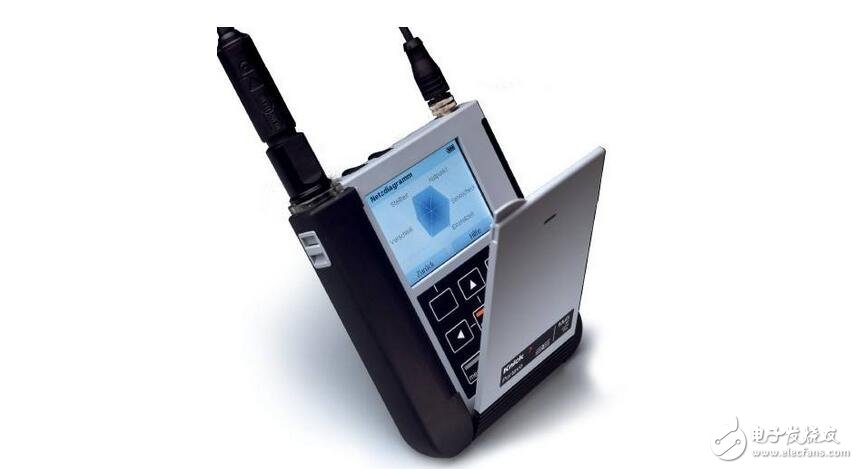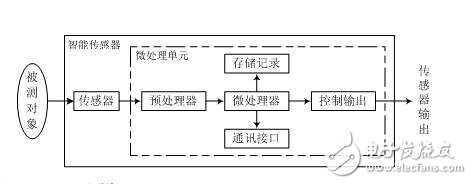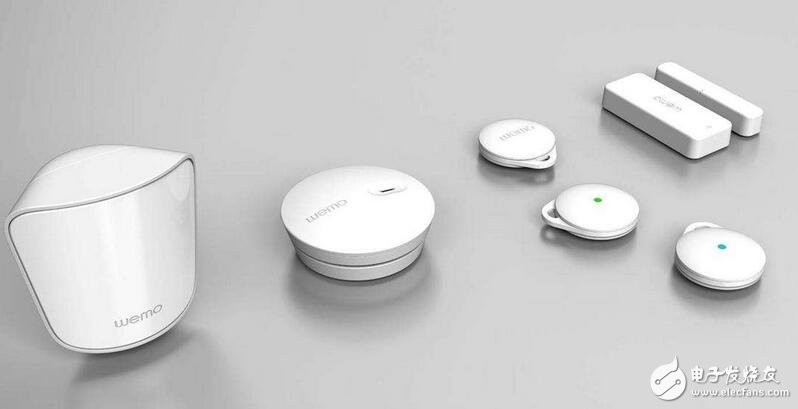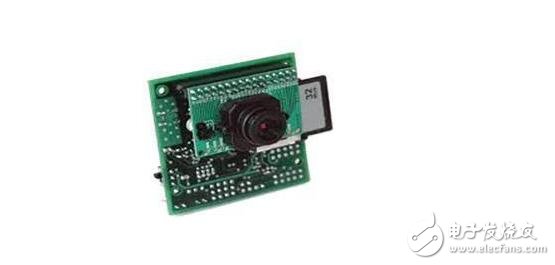An intelligent sensor is a sensor with information processing function. Smart sensors with microprocessors have the ability to acquire, process, and exchange information, and are a combination of sensor integration and microprocessors. The sensory system of a general intelligent robot is composed of a plurality of sensors, and the collected information needs to be processed by a computer, and the smart sensor can disperse the information, thereby reducing the cost. Compared with general sensors, smart sensors have the following three advantages: high-precision information acquisition through software technology, and low cost; with certain programming automation capabilities;

One of the biggest advances in the field of automation is the development and widespread use of smart sensors. But what exactly is a "smart" sensor? Below, experts from six sensor manufacturers define this term. According to Tom Griffiths, Product Manager, Industrial Measurement and Control, Honeywell: "A good 'smart sensor' is a microprocessor-driven sensor and instrument set with communication and onboard diagnostics for monitoring systems and/or Operators provide relevant information to improve work efficiency and reduce maintenance costs.†Smart sensors integrate all the functions of sensors and smart meters and some control functions. They have high linearity and low temperature drift, which reduces the complexity of the system. Simplified system structure.
The basic concept of smart sensors(1) system; (2) sensor; (3) intelligence.
Definition 1: A smart sensor is a sensor system that can adjust the internal performance of the system to optimize the ability to acquire external data.
Definition 2: A smart sensor is a device that combines sensitive components and signal processors into a single integrated circuit.
Definition 3: A smart sensor is a sensor that provides more functionality than correctly expressing the parameters of the measured object.
The intelligent sensor system is a modern integrated technology. It is a high-tech that is developing rapidly in the world today. It has not yet formed a standardized definition. In the early days, people simply and mechanically emphasized the close integration of sensors and microprocessors in the process. It is considered that "the sensor's sensitive components and their signal conditioning circuits and microprocessors are integrated on one chip is a smart sensor."
There is no unified statement about the Chinese and English titles of smart sensors. John Brignell and Nell White believe that "Intelligent Sensor" is the British name for smart sensors, and "Smart Sensor" is a common name for American smart sensors. In the article "Integrated Smart Sensor", Johan H. Huijsing is called "Smart Sensor" and "Integrated Smart Sensor" according to the degree of integration. The Chinese translation of "Smart Sensor" has been translated as "smart sensor" and also translated as "smart sensor".
Smart sensor structure
In summary, the main functions of smart sensors are:
(1) With self-calibration, self-calibration, self-correction function;
(2) With automatic compensation function;
(3) Ability to automatically collect data and preprocess the data;
(4) It can automatically perform inspection, self-selection range, and self-seeking failure;
(5) With data storage, memory and information processing functions;
(6) It has two-way communication, standardized digital output or symbol output function;
(7) It has the function of judgment and decision processing.
Achievable function
The function of the smart sensor is proposed by simulating the coordinated actions of the human senses and the brain, combined with the research and practical experience of long-term testing techniques. It is a relatively independent intelligent unit, its appearance has reduced the requirements of the original hardware performance, and software help can greatly improve the performance of the sensor.
1. Information storage and transmission - With the rapid development of the SmartDistributed System, the intelligent unit is required to have a communication function, and the communication network is used for digital communication in two-way communication, which is one of the key symbols of the smart sensor. Smart sensors implement functions by testing data transmission or receiving instructions. Such as gain setting, compensation parameter setting, internal detection parameter setting, test data output, etc.
2, self-compensation and calculation function - engineering and technical personnel engaged in sensor development for many years has been doing a lot of compensation for the temperature drift and output nonlinearity of the sensor, but they have not fundamentally solved the problem. The self-compensation and calculation functions of smart sensors open up a new path for temperature drift and nonlinear compensation of sensors. In this way, the precision of the processing precision of the sensor is relaxed, as long as the repeatability of the sensor is ensured, the signal of the test is calculated by the microprocessor, and the drift and nonlinearity are compensated by multiple fitting and difference calculation methods, thereby enabling Get a more accurate measurement of the pressure sensor.
3, self-test, self-calibration, self-diagnosis function - ordinary sensors need regular inspection and calibration to ensure that it is accurate enough in normal use, these tasks generally require the sensor to be removed from the use site to the laboratory or inspection department get on. If the online measurement sensor is abnormal, it cannot be diagnosed in time. The use of smart sensors has changed a lot. First, the self-diagnosis function performs a self-test when the power is turned on, and a diagnostic test determines whether the component is faulty. Secondly, according to the use time, the calibration can be performed online, and the microprocessor uses the measurement characteristic data in the EPROM for comparison and proofreading.
4, composite sensitive function - we observe the natural phenomena around, common signals are sound, light, electricity, heat, force, chemistry and so on. Sensitive component measurements are generally made in two ways: direct and indirect. The smart sensor has a composite function, which can measure a variety of physical quantities and chemical quantities at the same time, and gives information that can comprehensively reflect the motion law of the substance. For example, the composite liquid sensor developed by the University of California, USA, can simultaneously measure the temperature, flow rate, pressure and density of the medium. The composite mechanical sensor can simultaneously measure the three-dimensional vibration acceleration (acceleration sensor), velocity (speed sensor), displacement (displacement sensor) of a certain point of the object, and so on.
5, the integration of smart sensors ---- due to the development of large-scale integrated circuits, the sensor and the corresponding circuit are integrated on the same chip, and this sensor with some intelligent functions is called integrated intelligent sensor integrated smart sensor The function has three advantages: higher signal-to-noise ratio: the weak signal of the sensor is amplified by the integrated circuit signal and then transmitted over a long distance, which can greatly improve the signal-to-noise ratio. Improve performance: Since the sensor and circuit are integrated on the same chip, the zero drift, temperature drift and zero position of the sensor can be automatically calibrated periodically by the self-calibration unit, and the frequency response of the sensor can be improved by appropriate feedback. Signal normalization: The analog signal of the sensor is normalized by the process control amplifier, and is converted into a digital signal by analog-to-digital conversion. The microprocessor performs digital normalization in several forms of digital transmission, such as serial, parallel, frequency, Phase and pulse, etc.

1 high precision
2 high reliability and stability
3 signal to noise ratio and high resolution
4 adaptability
5 cost-effective
The smart sensor is a computerized detection system that extends the peripheral components with a microprocessor as the core. Compared to general sensors, smart sensors have the following distinguishing features:
1. Improve the accuracy of the sensor
The intelligent sensor has information processing function, which can not only correct various deterministic system errors (such as nonlinear error of sensor input and output, service error, zero point error, positive and negative stroke error, etc.) but also compensate for randomness. Errors and noise reduction greatly improve sensor accuracy.
2. Improve the reliability of the sensor
The miniaturization of the integrated sensor system eliminates some unreliable factors of the traditional structure and improves the anti-jamming capability of the entire system; it also has diagnostic, calibration and data storage functions (and adaptive functions for intelligent structural systems). Has good stability.
3. Improve the performance price ratio of the sensor
Under the same precision requirements, the multi-function smart sensor has a significantly higher performance-price ratio than a single-function common sensor, especially after using a cheaper single-chip microcomputer.
4. Contributed to the multifunctionalization of the sensor
The intelligent sensor can realize multi-sensor multi-parameter integrated measurement, expand the measurement and use range through programming; have certain adaptive ability, change the form of range inverse output data according to the change of detection object or condition; have digital communication interface function Directly sent to a remote computer for processing; with a variety of data output formats (such as Rs232 serial input batch, PIO parallel output, IEE-488 bus output and analog output after D / A conversion), adapt to each Application system.

In the past 20 years, the development of China's intelligent transportation system has gone through the process of system framework formulation and demonstration city construction to the current construction of intelligent transportation systems in all levels of cities. Today, China's urban intelligent transportation system has begun to play an increasingly important role in urban traffic management, information services and development decision-making, and has played a good supporting role in alleviating the increasingly severe road traffic congestion. In the entire intelligent transportation system, the sensor plays an irreplaceable role as a human being, and has a wide range of functions in various fields of transportation.
The following are the main research directions of intelligent sensors in China:
1. Using advanced microelectronic technology and computer technology, research and development of a single-chip integrated intelligent sensor that combines sensors and microprocessors with various functions, which is one of the main development directions of current smart sensors;
2. Develop molecular and atomic biosensors using biotechnology and nanotechnology for sensor materials, which will lay the foundation for the development of smart sensors in the future;
3. Integrate domestic and international chip technology, combined with sensitive electronic components, to develop a hybrid integrated intelligent sensor. This sensor has higher precision, lower cost and better stability.
China has made major breakthroughs in the field of integrated smart sensors, and domestic sensors have gradually opened up the market share of smart sensors.
The development of smart sensors is mainly divided into three phases, namely the digital phase, the intelligent compensation and calibration phase, the intelligent application and the network phase. The sensor that reaches the third stage has various functions such as signal detection and processing, logic judgment, two-way communication, closed-loop control, self-test and self-diagnosis, intelligent correction and compensation, function calculation, and network communication. However, at present, only a small number of manufacturers in China have reached this stage and have not been able to spread it on a large scale.
Another direction of development of sensors is miniaturization. In automotive electronic and intelligent engineering, traditional sensors are large in size and weight, high in cost, and limited in application. In this case, miniature sensors have emerged.
Micro sensors are not just about the small size and light weight of the sensor. In the case of a single sensor, a microsensor is a sensor with a small size. For example, the size of the sensitive component ranges from micron to millimeter, or even nanometer. It uses precision machining, microelectronics, and MEMS technology to achieve sensor size. Zoom out.
In terms of integrated sensors, micro-sensors are integrated sensors that are formed by encapsulating tiny sensitive components, signal processors, and data processing devices on a single chip. In the case of sensor systems, micro-sensors refer to not only sensing systems but also sensing systems. Including micro-sensors, including micro-actuators, can work independently, even a sensor network composed of multiple micro-sensors, or can achieve off-site networking; in terms of market share, micro-sensors are currently the most successful and most practical micro- Electromechanical devices, currently, micro-sensors have accumulated good application experience in automotive applications and improving employee efficiency. Secondly, due to the advantages of small size, new function, easy mass production, and low cost per piece, the micro-sensor has a bright future prospect.
Product categories of Maskking, we are specialized electronic cigarette manufacturers from China, Vapes For Smoking, Vape Pen Kits, E-Cigarette suppliers/factory, wholesale high-quality products of Modern E-Cigarette R & D and manufacturing, we have the perfect after-sales service and technical support. Look forward to your cooperation!
maskking e cigarette, maskking vape pen, maskking disposable vape, Maskking HIGH GT Vape, maskking vape
Ningbo Autrends International Trade Co.,Ltd. , https://www.supervapebar.com